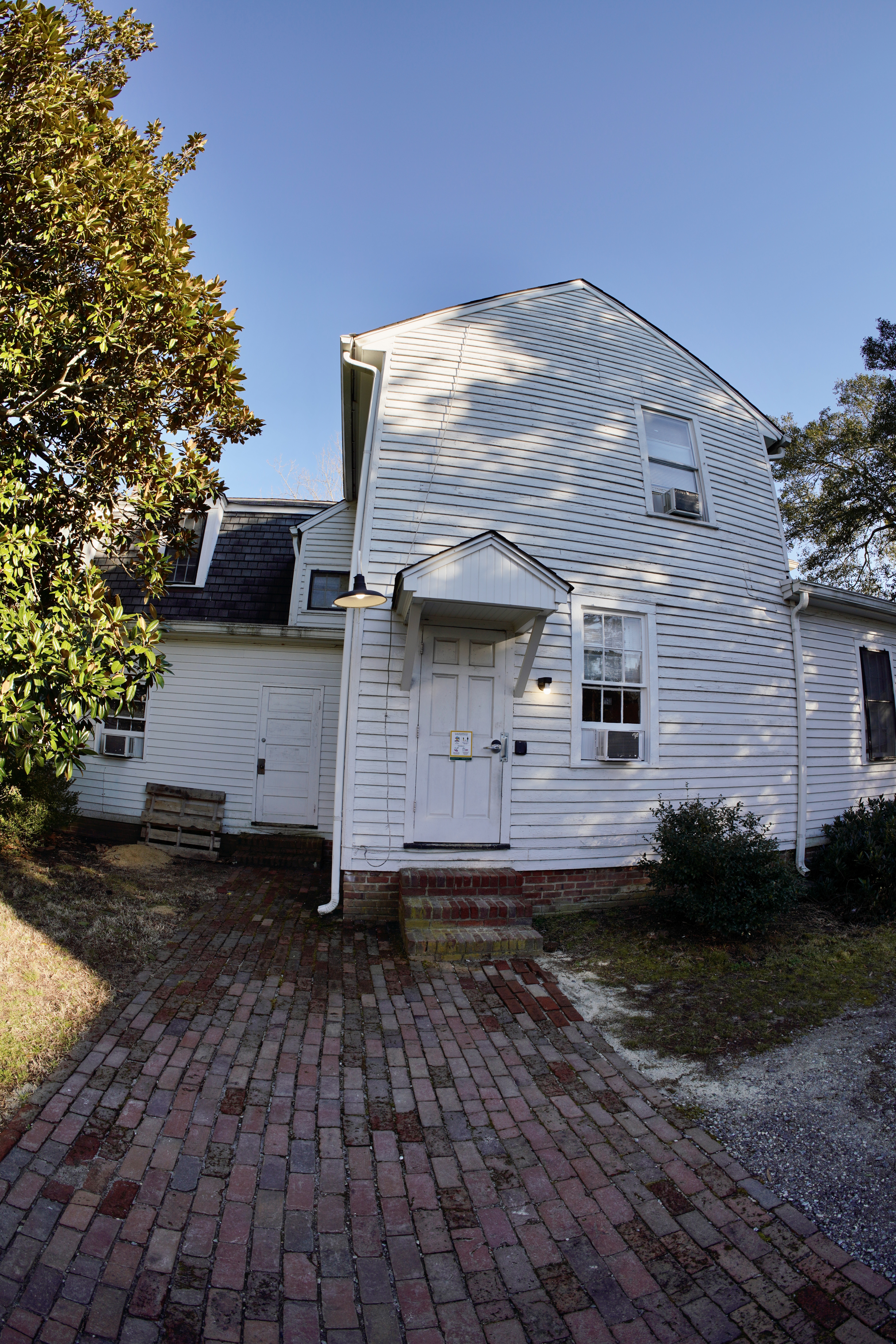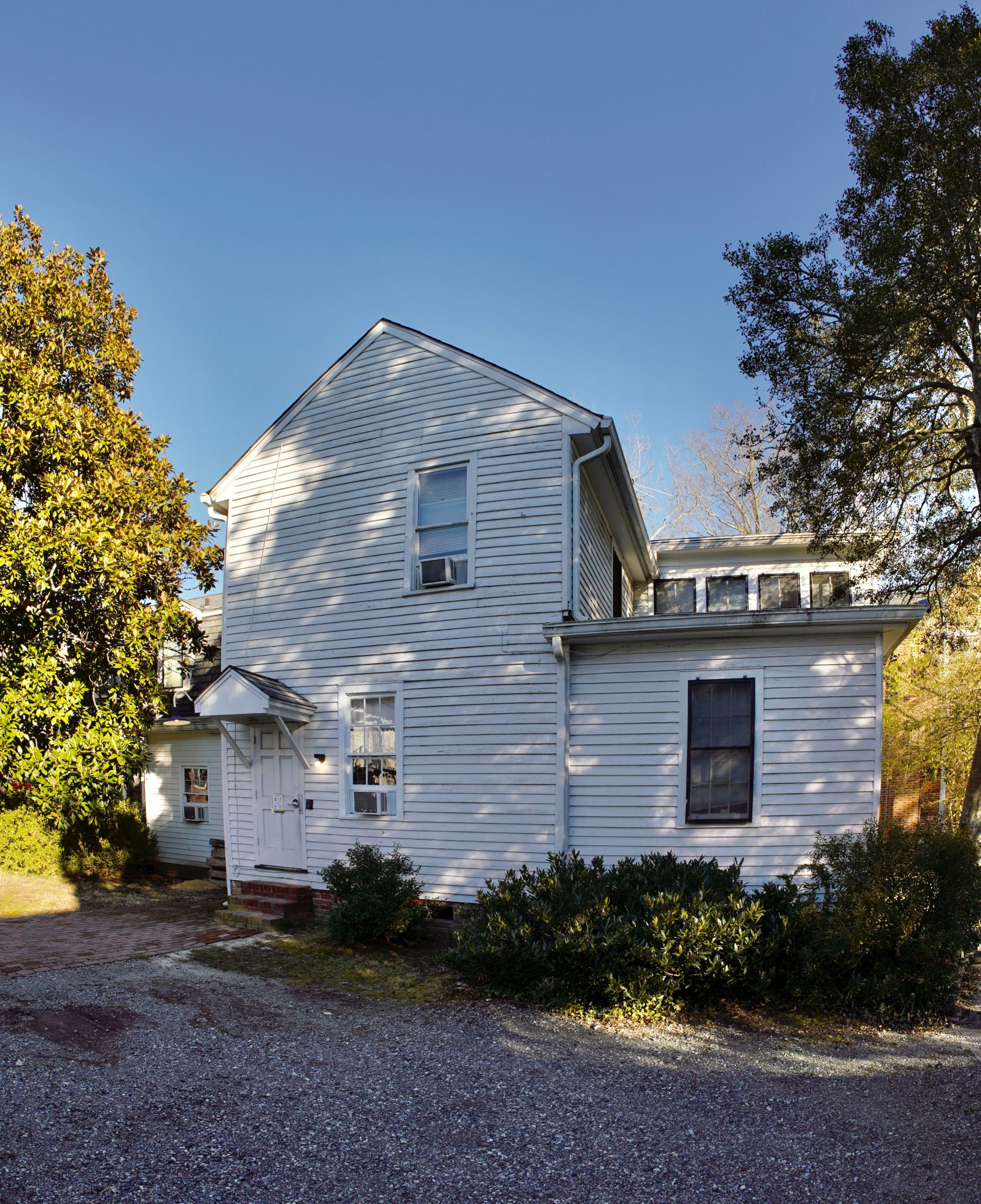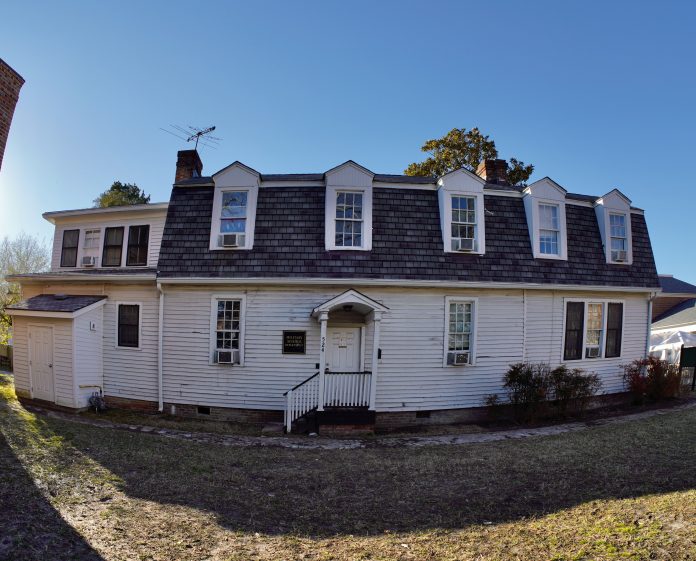Friday, Oct. 29, Colonial Williamsburg and the College of William and Mary announced a joint initiative to document the history of the Bray School, an 18th-century institution that once taught free and enslaved Black children, some of whom were enslaved by the College. After confirming that the building once housed the Bray School, the structure, which is currently located at 524 Prince George Street, will now be transported to the intersection of Francis and South Nassau streets, where it will be restored and used for public history programming and research.
The building, which recently housed the College’s military science program, has had many modern additions since its purpose as a school. These renovations make it difficult to visualize the original structure. This, Colonial Williamsburg says, is one of the reasons to move and restore the building.

ZACH LUTZKY / THE FLAT HAT
In addition to preserving the physical history of the structure, the College has partnered with Colonial Williamsburg to form the Bray School Lab, a foundation whose goal is to document and preserve the history of the school through partnerships with students, faculty and historians.
“This partnership between William & Mary and Colonial Williamsburg promises to transform our nation’s understanding of the intertwined histories of race, slavery, education and religion in America,” College President Katherine Rowe said in a press release. “Each intersects in the story of the Bray School. Bray School research will illuminate what it means to educate justly — William & Mary’s commitment for all times coming.”
The Bray School is one facet of the College’s complicated history of enslavement — the school did educate free and enslaved Black children on basic skills such as literacy; however, the main purpose of the school was a reinforcement of enslavement, based on Christian principles. Among the children educated, there were two — Fanny and Adam — who were enslaved by the College.

The Bray School Lab will examine this complicated legacy, including the motivations of the school’s founders as well as the Black children who used their education to subvert the system of enslavement. Vice Provost for Academic and Faculty Affairs Ann Marie Stock, who will oversee the Bray School’s research operations, says that the research will be multifaceted.
“A multidirectional flow of research is essential to understanding more about the school and, particularly, the students,” Stock said. “We’ll be doing descendant research, conducting oral histories to document the restoration while getting input from visitors and the local community. It’s an exciting expansion of our approach to research. By engaging the community in this endeavor, we will catalyze collaboration across boundaries and ensure a broad range of perspectives.”
Nicole Brown, an American Studies graduate student at the College, will play the role of Bray School Headmistress Ann Wager in Colonial Williamsburg’s reenactment of the location. Brown has conducted research on the Bray School, and will work as a reenactor part-time, while earning her graduate degree. Dr. Maureen Elgersman Lee, the Mellon Engagement Coordinator for African American Heritage and Culture at the College and the new director of the Bray School Lab, says that Brown’s work plays an important role in contextualizing the Bray School.
“The work of Nicole Brown – her own personal research, her graduate research and her experience as a living-history interpreter at Colonial Williamsburg – will add so much to the work of the lab,” Elgersman Lee said in a press release. “She really problematizes the education of enslaved Black children during that period, because it was not provided as a means of self-actualization. It was pragmatic, the actions of slave owners to further claim and control their chattel, a certain amount of education delivered through certain means of catechism. But it was education, nonetheless, and Blacks had agency to use it for their benefit.”
During the announcement of the new program, Rowe acknowledged several members of the audience who were descendants of the Bray School students, noting their role in the ongoing project to research and contextualize the school.
“Descendant-partnered research expands the narrative around the nation’s past,” Rowe said. “This is the process by which we can truly come to a shared understanding of our nation’s origin story, rather than a partial understanding of our nation’s origin story. We know that by sharing authority to interpret the discoveries and histories that this project is going to reveal, our research will be stronger, it will be more accurate, it will be more consequential and it will ultimately unite us, it will strengthen us together.”
Though the building itself is a historical artifact, Colonial Williamsburg President and CEO Cliff Fleet emphasized that the true historical value lies in telling the stories of the Bray School’s students.
“When you take your tour, you can, of course, marvel that we have found this,” Fleet said. “But what you really need to think about when you do that is look at the names of the children we know who were there, that we have posted on the wall to remind us to think about those children walking the floors and looking out the windows, and think about what they did to shape this great nation.”
Correction: This article has been updated 11/2/21 to clarify that the 524 Prince George Street location was not the original location of the Bray School. The school’s original location was what is now Brown Hall on the College’s campus.

